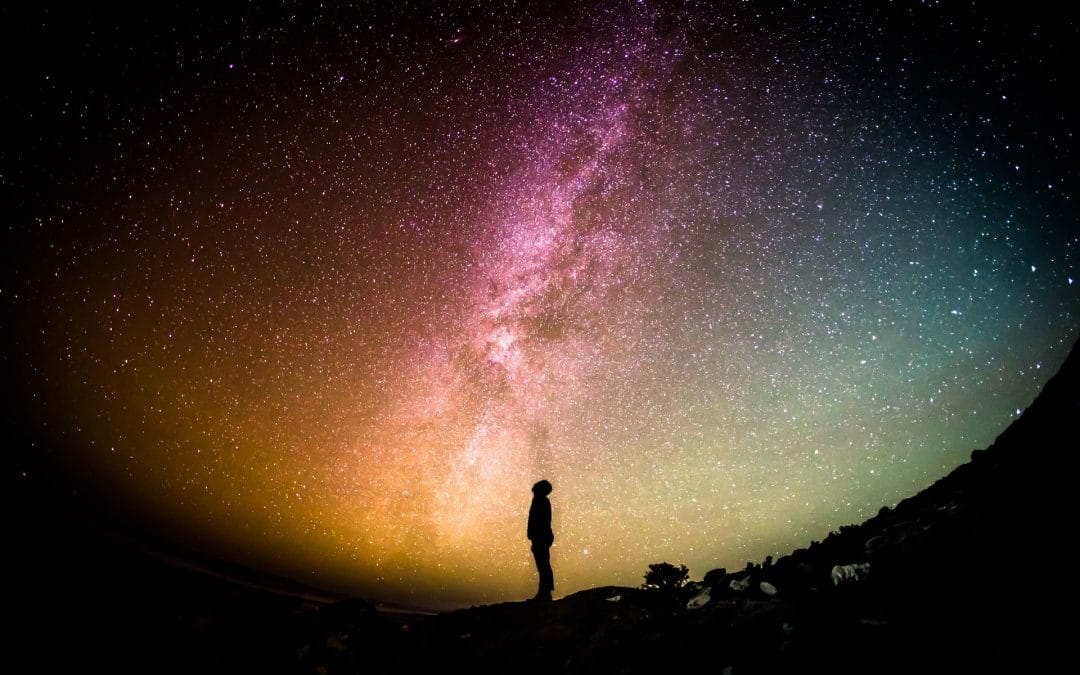
by Somya Devi | Apr 3, 2019 | Astrology, Conjunctions, Eclipses, Events, Holy Days, Planets Changing Signs, Retrograde
The Sun and Moon come together to begin a new lunar cycle at 1:51 am PDT on April 5th. They will join in sidereal Pisces in the nakshatra called Revati, the last of the 27 star signs of Jyotish. This New Moon brings with it the springtime nine-night celebration of the goddess, known as Chaitra Navaratri. Though often less celebrated than the fall-time equivalent, this holiday is an important counterpart as we recognize the blooming of the life cycle, made possible by the sacred divine feminine.
Pisces Cycle
The Dark Moon will be in sidereal Pisces, at 21°. (If you aren’t familiar with the sidereal/star-based vs. tropical/seasonally-based zodiacs, review my article here!) Pisces is the last of the twelve major signs, and thus relates very much with letting go, especially on the materially plane, and surrendering to spirit or a higher power. Ruled by Jupiter (literally “Guru” or the teacher), the Pisces cycle will help us to get more in touch with our highest values and philosophies. As a water sign, we are also more intuitively driven this month. Your dreams and visions can reveal a lot during this cycle, and inward reflection and meditation can be potent on this Dark Moon (April 4th-5th).
Revati
In addition to being in the final rasi, this New Moon is also in the final nakshatra, the Vedic signs that the Moon visits for one moon phase each, each month. Meaning “the wealthy,” this sign brings grace, kindness, and compassion. It is ruled by the deity Pushan, the celestial shepherd who provides nourishment and protection, both to herds (of animals) and also to people on safe journeys. This star often brings a love of animals and people with a natal Moon here often work with animals or have strong relationships with pets. The actual animal symbol is the female elephant, another auspicious symbol in India.
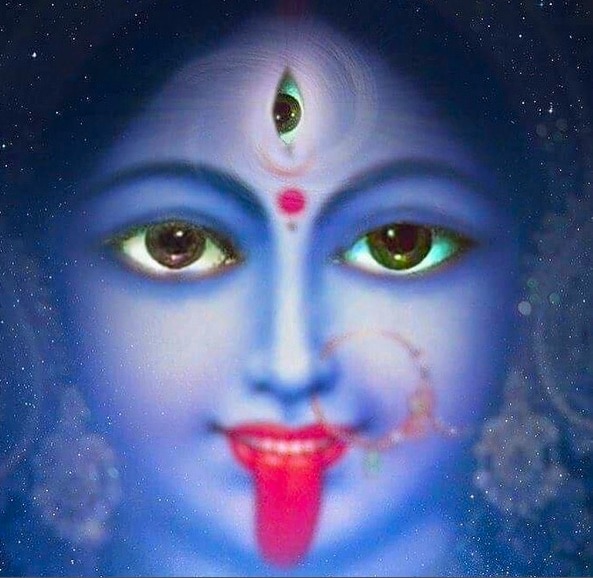 Chaitra Navaratri
Chaitra Navaratri
After the Dark Moon night, the first nine nights of this cycle will be the springtime Navaratri celebration, in the Hindu month of Chaitra. The nine nights are a time to get in touch with the Goddess energy, apparent and emergent as we enter the spring season in the northern hemisphere. There are so many forms to the goddess, and she truly offers us an immense well of abundance through all facets of life. This is a good time to get clear on what you are calling in, and trying to manifest with the grace of the goddess by your side.
Recent Nodal Transit
The nodes on all counts are officially transiting Gemini and Sagittarius now, with Rahu in Gemini and Ketu in Sagittarius. This new nodal cycle will last until September of 2020. Whichever houses these are in your chart will be effected, especially around the times of the eclipses, this July, December-January, and next June-July.
Saturn & Ketu
Not only is Ketu in Sagittarius, but he is approaching a close conjunction with Saturn. This could pile up a lot of stressful energy in the area of your life indicated by Sagittarius, unfortunately for most of this year. They’ll be joining within one degree (mean node calculation) at the end of this month, on the 25th, as Saturn slows to a halt and begins retrograde motion on the 29th. Since Ketu is always “retrograde,” the two will then be traveling together through the whole summer, until Saturn turns direct on September 18th, and they finally break their one-degree proximity on October 1st.
How will this affect us? It’s difficult to say exactly because they have somewhat conflicting energies… thus you can expect to feel this type of push-pull conflict in the Sagittarius area of your life. Saturn puts on the pressure, makes us do the hard work to meet our goals, have patience, and endure. On the other hand, Ketu often compels us to throw our hands up and renounce the task at hand, feeling so critical of it that we often want to let it go completely. We can dive into an exploration of this transit over your personal chart in an Eclipse Reading.*
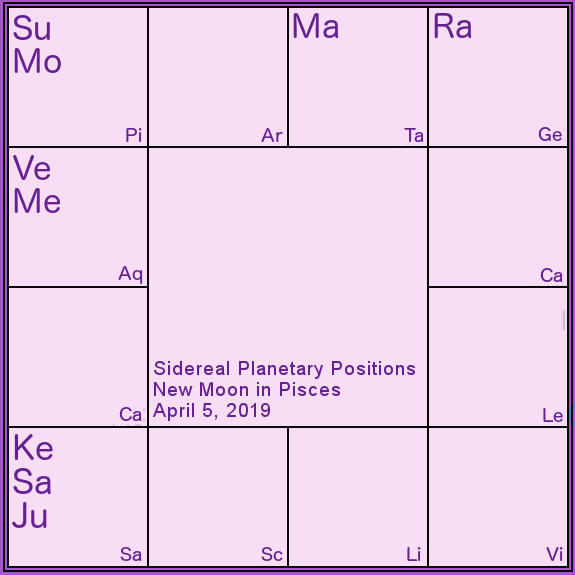
Jupiter & Venus
Jupiter is also joining Saturn and Ketu in Sagittarius now, hovering in the early gandanta degree as he slows to a stop and begins retrograde motion on April 10th. This will send him back into Scorpio on the 22nd. His presence in his own sign of Sagittarius could normally be uplifting to the situation there, but in his current condition he may not be as helpful as usual. The gandanta energy could make him weaker, while the retrograde condition is actually a strength (he will be quite bright in the sky in the coming months). Remember that he is also the ruler of this Pisces new Moon, so this “mixed” stuck/inspired energy could also seep into the general tone of the month ahead.
Venus will be moving into Pisces on the 15th, however, where he is exalted, which could bring some upliftment and more happiness into our lives, though he will also be conditioned by the mixed opportunities that Pisces’ ruler Jupiter offers right now.
*If this is your first reading with me, I recommend starting with the longer life-course reading, which will include a look at the current transits and how these affect you, in addition to your general karma, strengths, and challenges.
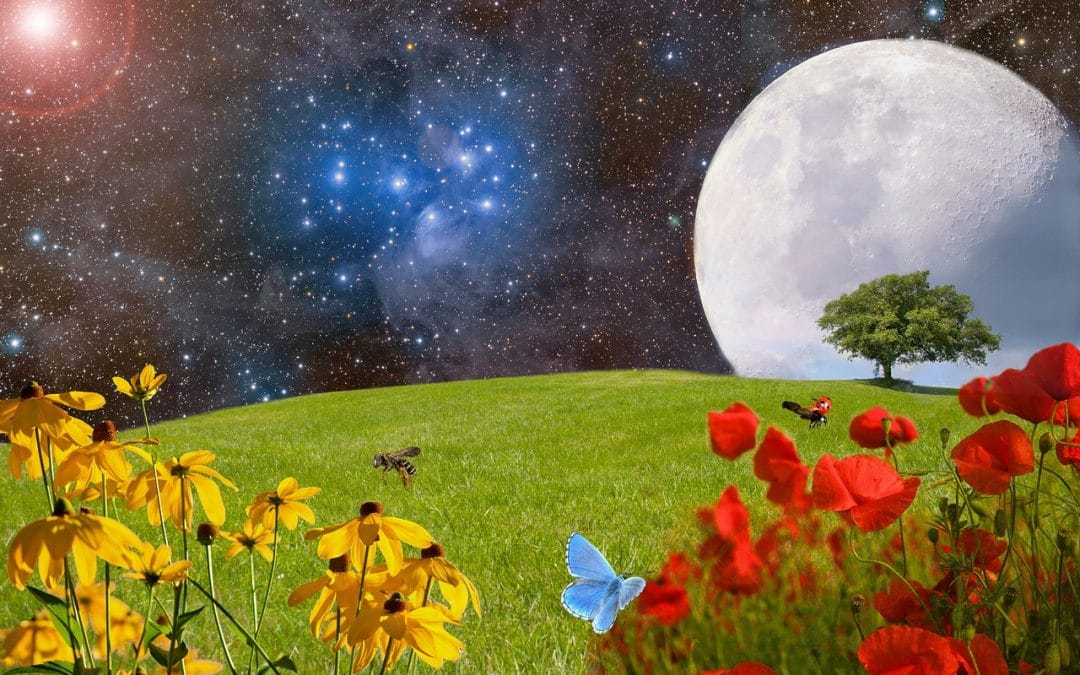
by Somya Devi | Mar 20, 2019 | Astrology, Conjunctions, Events, Holy Days, Planets Changing Signs
The Moon will be reaching peak waxing this cycle at 6:43 pm PDT tonight, March 20th, just before rising across from the setting Pisces Sun. This Full Moon brings with it the Hindu Holiday Holi, a joyful celebration of spring and renewal. We have a rare occurrence this year where the Holi full Moon actually coincides with the spring equinox (today!), rather than preceding it. This is a powerful setup for harnessing auspicious energy as we move into the new season and cycle of life.
Virgo Full Moon
Virgo is actually a sign of the maiden related to springtime as well, and with the full Moon here we may feel connected to the feminine earth energy more than usual. The Sun is opposite in Pisces, connecting our spirit to the dreamworld and helping us to envision our soul’s highest and most imaginative creative potential. With the Moon opposite and fully illuminated by this light in Virgo, we have the opportunity to take those dreams and visions and ground them into the earth plane. This is a potent time for planting seeds of manifestation, drawing the ethereal into the material world.
With Virgo’s ruler, Mercury, retrograde until March 28th, and Pisces’ ruler Jupiter in gandanta (see below), you may feel a little resistance or hesitation in harnessing this power. Take the opportunity to go inward and have some quiet time to tap into these energies, even though it is a celebratory full Moon.

Uttara Phalguni
Within Virgo this full Moon aligns with Uttara Phalguni nakshatra, the “latter reddish one” or the “latter fig tree,” images which also evoke the fertility associated with Virgo. This is a balanced nakshatra, ruled by Aryaman, a god of leadership and nobility, and associated with the purifying power of the Sun. Its animal symbol is the bull (the male cow), an auspicious image in Indian culture, also related to abundance and fertility. This nakshatra brings auspicious energy for marriage and romance, as well as ceremonies and new beginnings.
 Holi
Holi
Holi is one of the most joyful Hindu holidays, and marks a time for new beginnings as well. During this “festival of colors,” one of the main traditions is to throw powdered colors at each other, in sport, but also as a symbolic way of getting out any latent grievances or stuck energy from the past. When we do this in fun and frolic, it is a way to forgive and forget and begin the new season with joy and a fresh slate.
Spring Equinox & Renewal
Timed near the spring equinox, this holiday also relates very much to the blossoming of life that is coming now that winter is over and the spring season is upon us. There is a very powerful potential in this time of year, as the energies of day and night are equal, all over the earth, and the Sun is passing from the southern ecliptic onto the northern. Now is the time to take the seeds of your Piscean dreams, and plant them in the fertile soil of this Holi Equinox Virgo Full Moon!
Jupiter in Gandanta
A few words of caution, unfortunately. Jupiter has recently moved into the last muhurta of sidereal Scorpio, rendering him in gandanta, a difficult karmic knot. Jupiter will remain in gandanta until May 6th. He will transit into Sagittarius briefly on March 28th, before stationing and beginning retrograde motion on April 10th. He will only reach 0°14′ of Sagittarius, however, meaning he remains in gandanta through this entire transit. After he retrogrades back into Scorpio on April 22nd,, he will leave this difficult zone on May 6th. This is quite a long stretch for Jupiter to remain in gandanta, as he usually passes this area within a few days. This could cause some stuck feelings for those who are ruled by Jupiter, and for those areas in your life that Jupiter rules.
Personal readings are available to help you understand how the current transits may affect you.
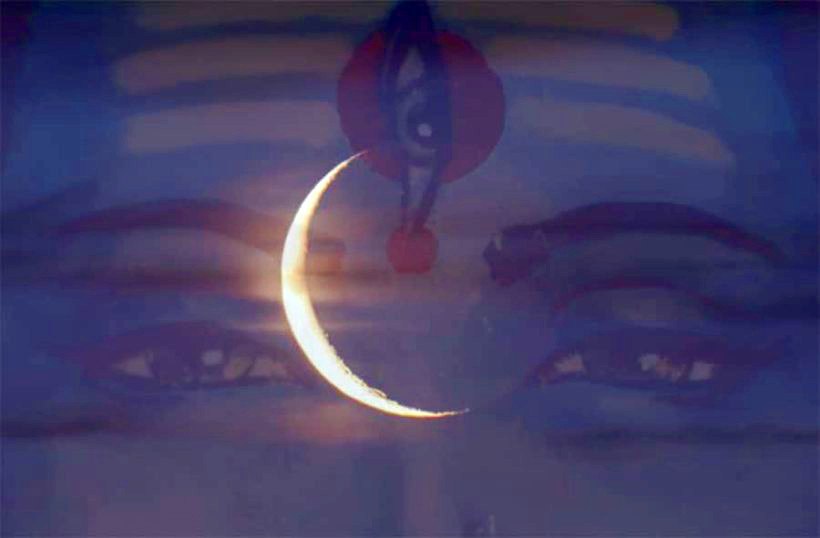
by Somya Devi | Feb 28, 2019 | Astrology, Conjunctions, Holy Days, Planets Changing Signs, Retrograde
The Moon wanes in sidereal Aquarius on the dark night of March 5th, approaching the exact Sun-Moon alignment for a New Moon at 8:04 am on Wednesday, March 6th, beginning a new lunar cycle. Leading up to this will be Maha Shivaratri, “the great night of Lord Shiva,” on March 4th. This is an auspicious night for prayer and penance, and the benefits of sadhana are multiplied by the Moon’s position and the collective vibration.
Maha Shivaratri
Monday night, March 4th, the night prior to the Dark Moon night, is the fourteenth waning phase of the lunar cycle. During this month this night is celebrated as Maha Shivaratri. This is perhaps the most auspicious night of the year for doing sadhana (spiritual practice). It is traditional on this night to stay up all night fasting, chanting, praying, and meditating. This holiday honors Lord Shiva, the great ascetic, and we can recall two stories of great sacrifices that he made protect the entire creation.
One of these is the story of the churning of the milk ocean, which the gods and demons were doing in order to release the nectar of immortality. Before the nectar came up, however, a poison came up first. (This is similar to when we do spiritual practice and begin our path of self-inquiry, and negative tendencies often come to light first, which can be a painful experience. Similarly, during a physical fast or cleanse, toxins can be shaken loose and released first, causing a healing crisis before we continue healing into a freer, happier state of being.) When the poison came up from the milk ocean, Lord Shiva consumed it so that it would not engulf humanity, as a great and noble sacrifice. His wife, Parvati, however, held his throat so that he could not ingest it, thus saving him from being harmed by the poison.
Maha Shivaratri also commemorates the wedding of Shiva and Parvati, which also stemmed from great sacrifice made for the benefit of all humanity. It was said that after his first wife, Sati, perished, Shiva was fully devoted only to his sadhana, meditating for aeons in isolation and renouncing the world. Then the demon Tarakasura began running amock on earth, threatening all of humanity. Brahma foretold that only Shiva’s child could defeat Tarakasura, so the gods devised a plan for Sati to reincarnate as Parvati, and win over her Lord to marriage once again. He was not easily swayed, however, and it was only after Parvati became an ascetic and underwent great penance that he agreed to marry. They eventually produced their son Kartikkeya, who went on to slay the demon.
Thus, this holiday is celebrated through the penance of fasting, forgoing food, water, and sleep, for one night, and simultaneously celebrating the union of Lord Shiva and Parvati, or the masculine and feminine energies of creation, that allows this dance of life to continue. It is an apt time to feel the forces of Aquarius upon us, which compel us to consider our role in society, and in the universe, and what personal sacrifices we can make for the greater good. Even if you’re not able to stay up the whole night, any amount of devotional practice, serviceful sacrifice, or chanting of Om Namah Shivaya on this night can have beneficial affects that are magnified greater than on any other night.
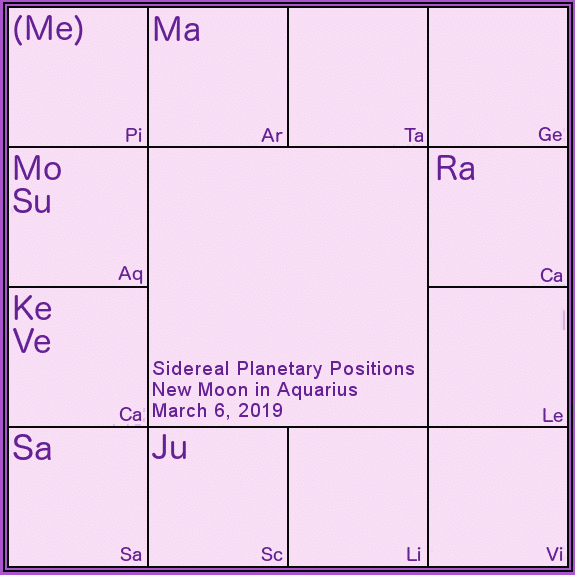
Aquarius Moon Cycle
The Sun and Moon meet in sidereal Aquarius to begin this lunar cycle. Aquarius is known as Kumbha in Sanskrit, a word for “pitcher” or “vessel.” According to the Vedic texts, the sign Kumbha can be imagined as a man holding a pot, with deep-brown skin, standing in the water. We can see this Aquarian imagery in the sadhus of India (and its biggest ritual pilgrimage day, the Kumbha Mela), who make their lives an offering of service to society through their prayers and Saturnian austerities, while renouncing the individual self. In the Aquarius cycle, we think about how we can serve the whole.
Saturn both rules Aquarius and is aspecting the Sun and Moon here (from sidereal Sagittarius) at the time of this New Moon. Saturn brings to us awareness of the long term and the bigger picture, and through this masculine or active sign, compels us to make commitments and offerings to something greater than ourselves and our momentary happiness. This is a great month to consider a new way that you may be of service to your community or to society.
Purva Bhadrapada
The New Moon cycle begins with the Sun and Moon in the Vedic nakshatra called Purva Bhadrapada, the former “lucky footed one.” This nakshatra bridges Aquarius and Pisces and is often represented by a funeral cot, symbolizing the transition from life into death, or ultimate liberation. It is ruled by Aja Epakada, the one-footed goat who is often associated with the image of Lord Shiva as Nataraj dancing on one foot, a fitting image for Maha Shivaratri.
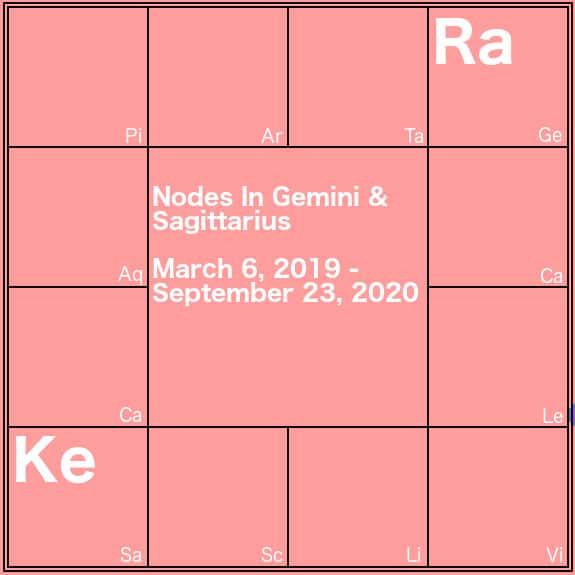 Nodes Are Changing Signs!
Nodes Are Changing Signs!
With a mean node calculation, Rahu and Ketu will transit into Gemini-Sagittarius on March 6th. (Under a true node calculation, they will not change signs until March 23rd; See Technicalities: Mean vs. True Node section below if you want a little more info about nodal calculations.) Regardless of the calculation used, March is a month of transition for the nodal energy. With the nodes in Cancer-Capricorn for the last year-and-a-half, we collectively felt a dichotomy between listening to the heart and following our emotions, against doing what is practical and responsible in an earthly way. It was a chance to balance these two things as well, learning to create a harmony between the practical and the emotional.
Throughout the coming transit of Rahu and Ketu through Gemini and Sagittarius, we will be feeling a polarization between curiosity, fact-finding and learning in an intellectual way, versus taking actions based on our principles and beliefs. Sometimes the intellectual mind does not agree with our fiery passions. This transit will be a time to learn to balance the two. With opinionated Sagittarius on one side, and communicative yet flexible Gemini on the other side, we may learn new ways to communicate and interact with those who oppose us in ideas, stepping into another’s shoes while still maintaining and honoring our personal beliefs and philosophy.
For each natal rising sign, this coming transit will affect a particular axis of learning in your life. You will be more able to see and work with some of your blind spots in these areas throughout the coming year-and-a-half long nodal transit. These things will especially surface around the bi-annual pairs of eclipses (coming this year in July and December).
Mercury Retrograde
Mercury stations and begins apparent retrograde motion on March 5th, the day before the New Moon. He is also currently debilitated in sidereal Pisces, so this time period could have us a bit mixed up around some details, and possibly challenged with communication and accuracy. He’ll retrograde back into Aquarius on March 14th, before returning to direct motion on the 28th.
Jupiter Gandanta
Also during the first half of this lunar cycle, Jupiter will enter the last 48 minutes of sidereal Scorpio (one muhurta), on March 15th. This region of the sky, called gandanta or a “knot,” is considered one of the most difficult places in the zodiac. It spans for one muhurta before and after the 0° point between sidereal Scorpio and Sagittarius, as well as those regions on the cusp of Cancer-Leo and Pisces-Aries (however, this gandanta location is often considered the most difficult. (Some astrologers may consider it spanning up to one or even two or three degrees to either side of the cusps.)
Normally, a planet transits through this zone rather quickly. Jupiter is currently slowing down, however, and will come to a stationary halt at 0°14’ of sidereal Sagittarius on April 10th, before beginning retrograde motion and passing back into Scorpio. He will threrefore be traveling the gandanta zone all the way from March 15th until May 6th (or longer if the zone is interpreted as wider).
Though Jupiter will be dipping into his own sign from March 15th through April 22nd, the fact that he will remain in gandanta at this time will not bring the added strength that we would expect from a sva graha. Those who are ruled by Jupiter may feel a bit “stuck” in various ways throughout this transit. It is important to be patient and keep up with sadhana during this time. Additionally, he will be joined by both Saturn and Ketu during his time in Sagittarius, both of which can be challenging companions.
Technicalities: Mean vs. True Node
Rahu and Ketu have been transiting through the Cancer-Capricorn axis for nearly 18 months, and are getting ready to make their transition into the Gemini-Sagittarius axis, for the next 18. The date of this transition will vary whether you are using the “mean node” calculation or the “true node” calculation. To simplify this as much as possible, we must realize that the nodes do not have planetary bodies that can be observed as the other grahas can be. (The grahas are “the forces that grab us,” including the Sun, Moon, Mars, Mercury, Jupiter, Venus, Saturn, Rahu and Ketu.)
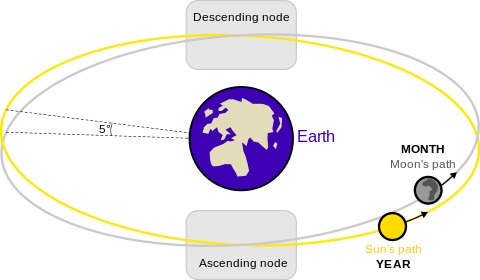 The nodes, astronomically are the places where the Sun’s and Moon’s paths intersect. The ecliptic is the apparent paths that the Sun travels “around” the Earth. The Moon’s orbits is not completely flat or parallel with the Sun’s, but slightly inclined, so that it passes this line and is sometimes to the north of it, sometimes to the south. We can measure astronomically and by observation when these crossings happen. To get the mean node, we take an average distance between these two points based on how many days it takes the Moon to get from one to the other. The true node is calculated using a method that also accounts for the slight wobble of the earth and the Moon’s orbit around it.
The nodes, astronomically are the places where the Sun’s and Moon’s paths intersect. The ecliptic is the apparent paths that the Sun travels “around” the Earth. The Moon’s orbits is not completely flat or parallel with the Sun’s, but slightly inclined, so that it passes this line and is sometimes to the north of it, sometimes to the south. We can measure astronomically and by observation when these crossings happen. To get the mean node, we take an average distance between these two points based on how many days it takes the Moon to get from one to the other. The true node is calculated using a method that also accounts for the slight wobble of the earth and the Moon’s orbit around it.
Some astrologers favor using the “mean” node calculation while others prefer the “true.” These two calculations of the node will sometimes put them about one degree apart, which is noticeable in cases where, in a natal chart, someone’s node is on the cusp of two signs (it may be in one sign using mean node and another sign using true node). It also affects the date of transition between signs that we observe when talking about nodal transits. In both cases, it is best to observe for yourself (use a lot of charts for case studies) and see which makes the most sense to you. I prefer using mean node calculation.
Personal Readings are available to help you understand your individual natal chart and how these transits will affect your upcoming year.
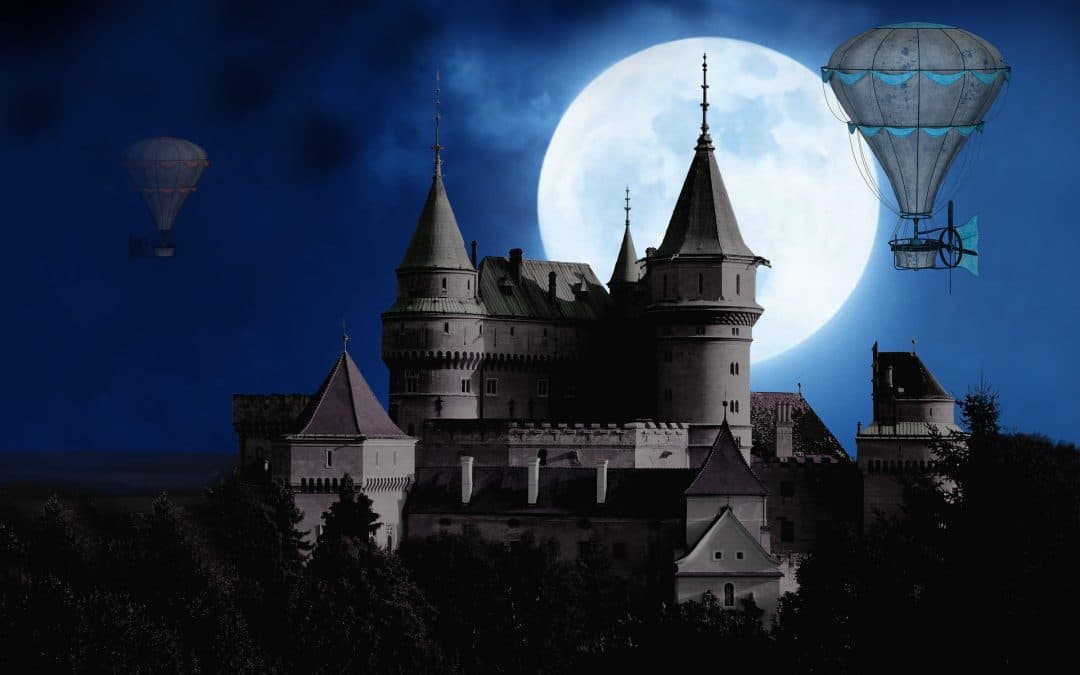
by Somya Devi | Feb 17, 2019 | Astrology, Conjunctions
The coming Full Moon is Monday night, waxing into complete fullness in sidereal Leo on Tuesday morning, February 19th at 7:54 am PST. This full Moon is in the Vedic sign of Magha, “the mighty,” and highlights our sovereignty and individual power, as well as how we use this to serve others (opposite the Sun in Aquarius). With Venus and Saturn at war, however, and Mars strong in his own sign, there may be some friction with others as we attempt to balance personal strength with inter-personal relationships.
Leo
Leo is the sign ruled by the Sun, the effective “king” of the zodiac, making Leo a place of authority, power, and inevitably, a sense of hierarchy that is related to leadership/rulership. With the Moon fully illuminated here, our minds and hearts come in touch with our inner power. The Sun is in fact the inner power in all of us, literally fueling life in this solar system, emanating the light and heat necessary for life as we know it.
When we are in touch with this inner light, it elevates us into a position where we are able to take action, shine brightly, and step into our own power. In the best circumstances, we do not hoard this light or power for ourselves, however, but this transforms us into leaders who are able to help take care of others with their abundant light. An example of this is when we see parents, CEOs, and governmental figures using their energy and authority to take care of many many people outside themselves. (This is the higher or proper functioning of the Sun’s light in Leo; when we hoard the Sun’s power for personal gain, it eventually burns us up, as we have seen throughout history.)
To the extent that we do sit in the bright rays of the Sun, absorbing his power rather than sharing it, the healthiest way to use this energy is for self-purification. The Sun is a sattvic planet and his fire is a tool to purify us, to help us elevate into our highest selves. As we bask in the glow of the full Moon in Leo, we will thrive if we can use this energy for both self-purification and outward giving.
The full Moon in Leo is opposite an Aquarius Sun. Aquarius is a sign that relates very much to service of the whole, and often, renunciation of individual power. But with the Sun and Moon in opposite axes here, we can come into contact with more of a balance between the two.
 Magha Nakshatra
Magha Nakshatra
Magha, “the mighty,” is the Vedic nakshatra that spans the first 13 degrees of sidereal Leo, but associated most with the star Regulus. This bright star within Leo constellation emits a regal glow, and elicits feelings of royalty, power, and nobility. Its symbol is the royal throne, and its spirit animal is the male rat.
Magha is ruled by the Pitris, the ancestor deities. With the Moon here, it is a great time to connect with your ancestral traditions, to honor your lineage or teachers, and to tap into your genetic wisdom.
Saturn-Venus
Saturn and Venus will be in planetary war (within one degree of each other in sidereal Sagittarius), on the 17th and 18th, leading up to this Full Moon. In this event, both planets are challenged and weakened, and we may find trouble in various areas of life, including relationships, work, happiness, and patience. Whichever four areas of life these planets rule for you may be under stress this weekend.
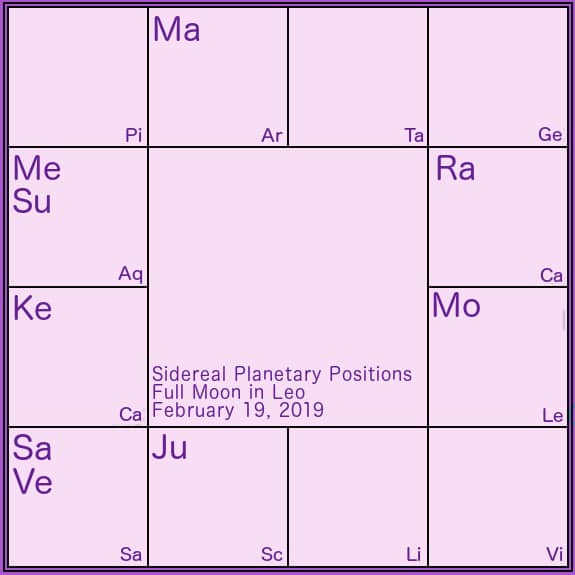
Ketu-Venus
After passing Saturn and continuing towards the end of Sagittarius, Venus will face another tough conjunction in a few days as he transits into Capricorn, conjoining Ketu simultaneously. The Venus-Ketu exact conjunction will be on February 24th, at 0° sidereal Capricorn. This could definitely raise some of the shadows in our relationships, as Ketu tends to do. He is also known to increase dissatisfaction, criticism, and aversion, so if you are feeling this way about your partner (or your enjoyment of life in general) around this time, look for what underlying lessons are coming through, but don’t renounce everything in a moment of overreaction to the stress.
Nodal transits and conjunctions can be tough, and they give us the chance to see where we need to do work in our lives. It is best to glean lessons and insight from what is coming through, once you feel clarity around it, but it is advisable not to make hasty decisions out of stress during these transits.
Mercury
Mercury also transits into Pisces, his sign of debilitation, on February 24th, and will be weak at 0°. With Mercury in Pisces, our analytical thinking tends to get more “colorful” and hopeful. This can be enjoyable and foster creativity, especially if you’re normally more left-brained, but be aware that you may not be as on-the-ball with the details as you usually are. He then stations and goes into retrograde motion on March 5th, the day before the next new Moon on March the 6th.
Mars
Mars is sva (in his own sign) in Aries until March 22nd. This can be a good time to get disciplined, and especially to consider picking up a little more exercise and activity as we come out of the winter season. For those with an afflicted or difficult Mars, however, this can lead to more anger and aggression. Be sure to stick with cooling activities if you feel your frustration building and boiling.
If you missed it, be sure to catch the replay of the 2019 Jyotish Transit Summit. We discuss all the major planetary movements and what to expect from them this year. Personal readings are available to look deeper into how this year’s transits will affect your personal astrology.

by Somya Devi | Feb 3, 2019 | Uncategorized
The Sun and Moon are coming together again for a dark Moon (the amavasya lunar phase) tonight, February 3rd. They will come into complete alignment for a “New Moon” at 21° sidereal Capricorn tomorrow, February 4th at 1:04 pm PST to begin a new lunar cycle. Now is a good time to go inward, taking a break from too much activity, and let go of some of the past month’s energy as we prepare for the new. The Sun and Moon meet in the Vedic nakshatra of Sravana, the star of hearing.
Capricorn
This new lunar cycle will begin under the energy of Capricorn, with Sun and Moon joining both Mercury and Ketu there. Capricorn is the feminine earth sign ruled by Saturn, the disciplinarian. Under Capricorn energy we look at ourselves and see where we need to be more responsible and committed, where our lives are calling for more structure and hard work. Saturn can give perseverance, so wherever you set your sights and goals now will have support in the coming month.
Yet at the same time, we may see that the benefit comes from reducing activities and keeping order and routine. We may find ourselves putting more things in order in our physical worlds, and also paying attention to our general level of groundedness. Near the end of winter, and after the usual business of the holidays, it is a really good time to allow for more stillness in your life, before the energy of spring comes on and calls us outward again.
Because of Ketu’s conjunction here, we may feel some residual “eclipse energy,” which helps to show us blind spots and blockages. We have experienced this energy along the Cancer-Capricorn axis for nearly a year-and-a-half now, as Rahu and Ketu have transited there, and this month may be a final phase of integrating those lessons in our lives before the nodes move into Gemini and Sagittarius.
Sravana
Within the Vedic zodiac, this New Moon aligns with Sravana nakshatra, the star-sign of hearing, listening, and learning. This promotes a great energy for acquiring knowledge, both inner and outer. As we turn inward and listen with the inner ear (through meditation and other mindful practices), great wisdom can be revealed. This nakshatra is also associated with learning from oral traditions, and supports communication in general. As Mercury joins Ketu during this New Moon, we have a chance to release some blockages around communication, or reveal some ancient or inner wisdom, but be very alert with this as the nodes can also be quite unpredictable.
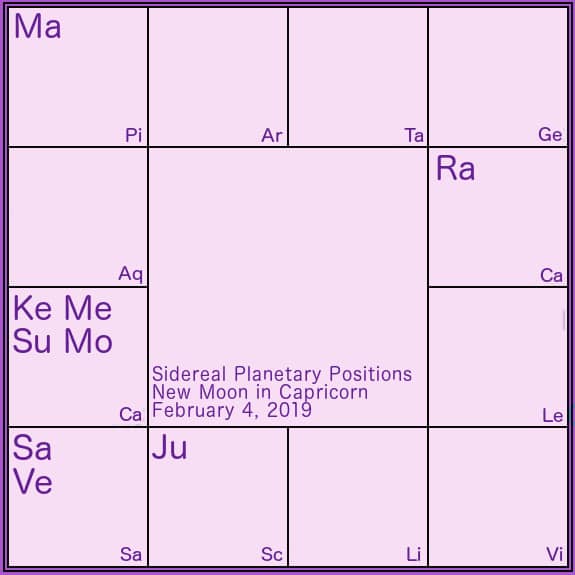
Venus & Saturn
Venus and Saturn are now joining in Sagittarius for a few weeks, until the 21st. Their energies can complement each other as Venus reminds the disciplined Saturn that we need to enjoy life as humans, while Saturn reminds Venus to use some discernment and not over-indulge in sensory pleasures. They will come within one degree of each other, as Venus passes Saturn, from February 17th-18th, causing a graha yuddha or planetary war. During this time, the things ruled by both planets can suffer (per your individual chart), and in general we may feel a great inner struggle, as our natural inclinations for pleasure seem in great conflict with our long-term goals and commitments. Commitment in relationships in particular could feel stressed during these days.
Mars
Mars and Jupiter have been exchanging signs, with Mars in Pisces and Jupiter in Scorpio, creating a certain harmony between the two for several weeks. Mars will move into Aries on the 5th of February, coming into full strength in his own sign and Moolatrikona position as he transits 0° to 12° Aries. This time could be beneficial for Mars-ruled people especially. Everyone has Mars ruling something in their charts as well, and these areas may have gone through a great deal of difficultly last year during the 6-month Mars-Ketu conjunction in Capricorn. The coming transit will be a time to harness strength again in these areas.
If you missed it, be sure to check out the 2019 Jyotish Transit Summit from last month! Myself and four other astrologers go over all the major planetary movements and what to expect for the coming year!

 Chaitra Navaratri
Chaitra Navaratri



 Holi
Holi







